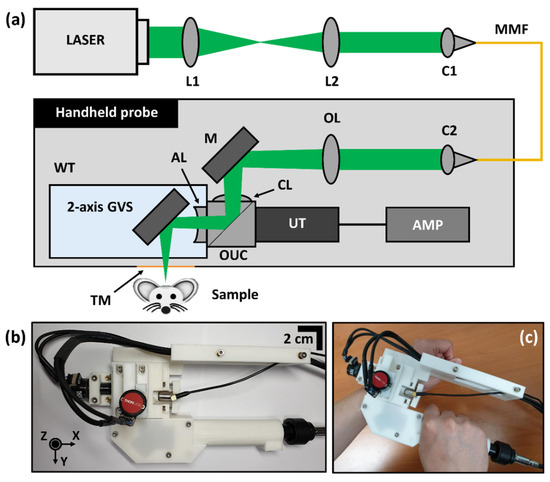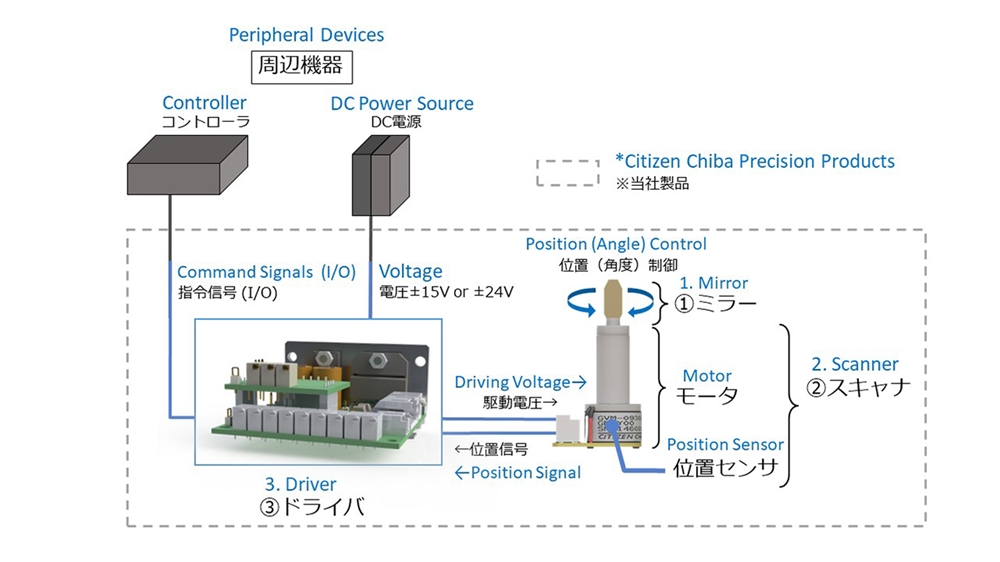How a Galvanometer Scanner Enhances Performance in Laser Scanning Technologies
The combination of galvanometer scanners in laser scanning modern technologies represents an essential development in precision engineering. By promoting rapid and accurate modifications of laser light beam instructions, these devices significantly enhance functional efficiency across different applications, from medical imaging to commercial inscription.
Comprehending Galvanometer Scanners
A galvanometer scanner is a sophisticated device that leverages electro-magnetic principles to accomplish accurate angular motion of mirrors or other reflective surface areas. These scanners run with the interaction of an electric present and an electromagnetic field, allowing fast and exact positioning. This modern technology is vital in applications needing high-speed scanning, such as laser inscription, optical communication, and clinical imaging.

Galvanometer scanners are frequently defined by their fast action times and high angular resolution, making them suitable for applications that require quick movements and exact placing. Their reliability and efficiency make them a vital part in modern laser scanning modern technologies, adding substantially to developments in different fields, consisting of production, healthcare, and telecommunications.
Mechanism of Laser Beam Control

The control device counts on closed-loop feedback systems that constantly keep track of the beam of light's setting. The signals from optical sensors offer real-time information to the control system, permitting fast changes to keep precision. This is essential in applications where even slight inconsistencies can compromise the quality of the scan or engraving.
Additionally, the galvanometer's action time is vital; high-speed motors make it possible for swift activities, guaranteeing that the laser light beam can rapidly map complex patterns or do detailed operations. The integration of digital signal processing further boosts the responsiveness and accuracy of the galvanometer scanner. In general, the mechanism of laser beam of light control with galvanometer scanners exhibits the fusion of sophisticated engineering and technology, generating high-performance outcomes in laser scanning applications.
Benefits of Improved Accuracy
Enhanced accuracy in laser scanning modern technologies uses significant advantages across numerous applications, from commercial production to medical procedures. The combination of galvanometer scanners enables extremely accurate light beam positioning, which is critical for tasks requiring thorough detail. This boosted accuracy makes certain that the laser can target particular locations with minimal inconsistency, causing premium top quality end results.
In industrial contexts, precise laser scanning leads to boosted item consistency and decreased material waste. Parts made with high precision are less likely to need rework, thus boosting efficiency and lowering functional prices. Likewise, in medical applications, the precision of laser procedures can significantly affect person outcomes. As an example, in laser surgical procedure, specific targeting lessens damage to surrounding cells, leading to quicker healing times and fewer problems.
Furthermore, enhanced accuracy assists in advanced applications such as 3D imaging and microfabrication, where also minute errors can lead to significant mistakes. By offering repeatable and reliable laser positioning, galvanometer scanners add to the total effectiveness and performance of laser systems. In summary, the advantages of enhanced precision not just boost operational performance but also elevate important link the criteria of high quality and safety in different markets.
Applications in Numerous Industries
The adaptability of galvanometer scanners in laser scanning innovations prolongs across numerous sectors, each profiting from the accuracy they give. In the clinical area, these scanners are pivotal in applications such as laser surgery and imaging, permitting very exact targeting of tissues while lessening damage to bordering areas - galvanometer scanner. Their fast reaction and fine resolution are important in generating top notch results
In the production industry, galvanometer scanners enhance procedures like laser engraving and cutting. Their capability to quickly route laser beam of lights onto surface areas makes it possible for efficient production lines, enhancing speed and accuracy in creating detailed designs or parts.
The automobile market likewise exploits on galvanometer innovation for quality assurance and examinations (galvanometer scanner). By utilizing high-speed scanning, suppliers can spot defects in assemblies or materials, ensuring that products get redirected here meet rigorous criteria
Furthermore, in the home entertainment sector, galvanometer scanners are employed in laser light shows and displays, providing dynamic aesthetic experiences with precise control over laser activities.
Future Trends in Laser Scanning
Emerging innovations are poised to revolutionize the landscape of laser scanning, with galvanometer scanners at the center of this transformation. As sectors significantly demand accuracy and performance, the evolution of galvanometer innovation will certainly drive substantial innovations in laser scanning applications.
Future patterns indicate a growing assimilation of expert system and artificial intelligence formulas, which will boost data processing capacities and automate decision-making in real-time. This harmony will enable more innovative analysis of checked data, bring about improved precision in applications such as 3D modeling and independent navigating.
Additionally, the miniaturization of parts and the development of advanced materials will contribute to lighter, a lot more portable laser scanning systems. This mobility will certainly expand the reach of laser scanning innovations into formerly hard to reach environments, such as remote surface and intricate building areas.
The rise of augmented fact (AR) and digital truth (VR) applications will certainly likewise form the future of laser scanning. By integrating galvanometer scanners with AR and virtual reality, users will certainly gain from immersive experiences that enhance visualization and job planning.
Verdict
To conclude, galvanometer scanners play a crucial role in optimizing laser scanning modern technologies through their specific control of that site beam of light direction and quick angular adjustments. The combination of advanced comments systems and optical sensing units substantially enhances functional speed and accuracy, leading to enhanced results in applications such as laser engraving and medical imaging. As markets significantly embrace these modern technologies, the ongoing developments in galvanometer scanner designs are expected to additional raise efficiency criteria and broaden application opportunities.
The integration of galvanometer scanners in laser scanning innovations stands for an essential advancement in accuracy design. On the whole, the mechanism of laser beam control with galvanometer scanners exemplifies the fusion of sophisticated design and innovation, generating high-performance outcomes in laser scanning applications.
By providing repeatable and trusted laser positioning, galvanometer scanners contribute to the overall performance and efficiency of laser systems.The convenience of galvanometer scanners in laser scanning technologies extends throughout numerous markets, each profiting from the accuracy they provide.In conclusion, galvanometer scanners play an essential role in enhancing laser scanning innovations with their accurate control of beam instructions and fast angular changes.